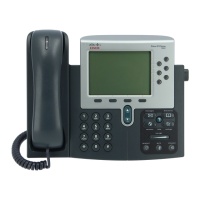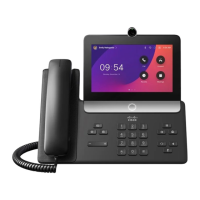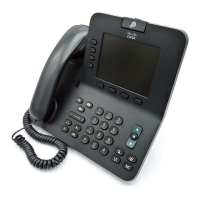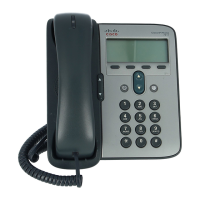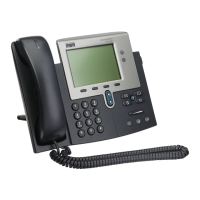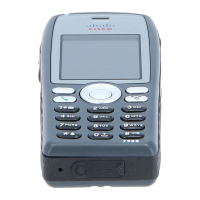B-6
Cisco SIP IP Phone Administrator Guide
AppendixB SIP Call Flows
Call Flow Scenarios for Successful Calls
Cisco SIP IP Phone-to-Cisco SIP IP Phone Simple Call Hold
Figure B-3 illustrates a successful call between Cisco SIP IP phones in which one of the participants
places the other on hold and then returns to the call. In this call flow scenario, the two end users are User
A and User B. User A and User B are both using Cisco SIP IP phones, which are connected via an IP
network.
The call flow scenario is as follows:
1. User A calls User B.
2. User B answers the call.
3. Call Proceeding—Gateway 1 to
PBX A
Gateway 1 sends a Call Proceeding message to PBX A to acknowledge the Call
Setup request.
4. 100 Trying—Cisco SIP IP phone
to Gateway 1
The Cisco SIP IP phone sends a SIP 100 Trying response to Gateway 1. The 100
Trying response indicates that the INVITE request has been received by the
Cisco SIP IP phone.
5. 180 Ringing—Cisco SIP IP
phone to Gateway 1
The Cisco SIP IP phone sends a SIP 180 Ringing response to Gateway 1. The
180 Ringing response indicates that the user is being alerted.
6. Alerting—Gateway 1 to PBX A Gateway 1 sends an Alert message to User A. The Alert message indicates that
Gateway 1 has received a 180 Ringing response from the Cisco SIP IP phone.
User A hears the ringback tone that indicates that User B is being alerted.
7. 200 OK—Cisco SIP IP phone to
Gateway 1
The Cisco SIP IP phone sends a SIP 200 OK response to Gateway 1. The 200 OK
response notifies Gateway 1 that the connection has been made.
8. Connect—Gateway 1 to PBX A Gateway 1 sends a Connect message to PBX A. The Connect message notifies
PBX A that the connection has been made.
9. ACK—Gateway 1 to Cisco SIP
IP phone
Gateway 1 sends a SIP ACK to the Cisco SIP IP phone. The ACK confirms that
User A has received the 200 OK response. The call session is now active.
10. Connect ACK—PBX A to
Gateway 1
PBX A acknowledges Gateway 1’s Connect message.
11. INVITE—Cisco SIP IP phone to
Gateway 1
User B puts User A on hold. The Cisco SIP IP phone sends a SIP INVITE request
to Gateway 1.
12. 200 OK—Gateway 1 to
Cisco SIP IP phone
Gateway 1 sends a SIP 200 OK response to the Cisco SIP IP phone. The 200 OK
response notifies the Cisco SIP IP phone that the INVITE was successfully
processed.
13. ACK—Cisco SIP IP phone to
Gateway 1
The Cisco SIP IP phone sends a SIP ACK to Gateway 1. The ACK confirms that
the Cisco SIP IP phone has received the 200 OK response. The call session is now
temporarily inactive. No RTP packets are being sent.
14. INVITE—Cisco SIP IP phone to
Gateway 1
User B takes User A off hold. The Cisco SIP IP phone sends a SIP INVITE request
to Gateway 1.
15. 200 OK—Gateway 1 to
Cisco SIP IP phone
Gateway 1 sends a SIP 200 OK response to the Cisco SIP IP phone. The 200 OK
response notifies the Cisco SIP IP phone that the INVITE was successfully
processed.
16. ACK—Cisco SIP IP phone to
Gateway 1
The Cisco SIP IP phone sends a SIP ACK to Gateway 1. The ACK confirms that
the Cisco SIP IP phone has received the 200 OK response. The call session is now
active.
Step Action Description
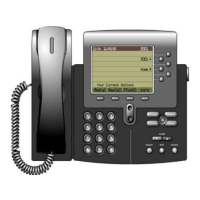
